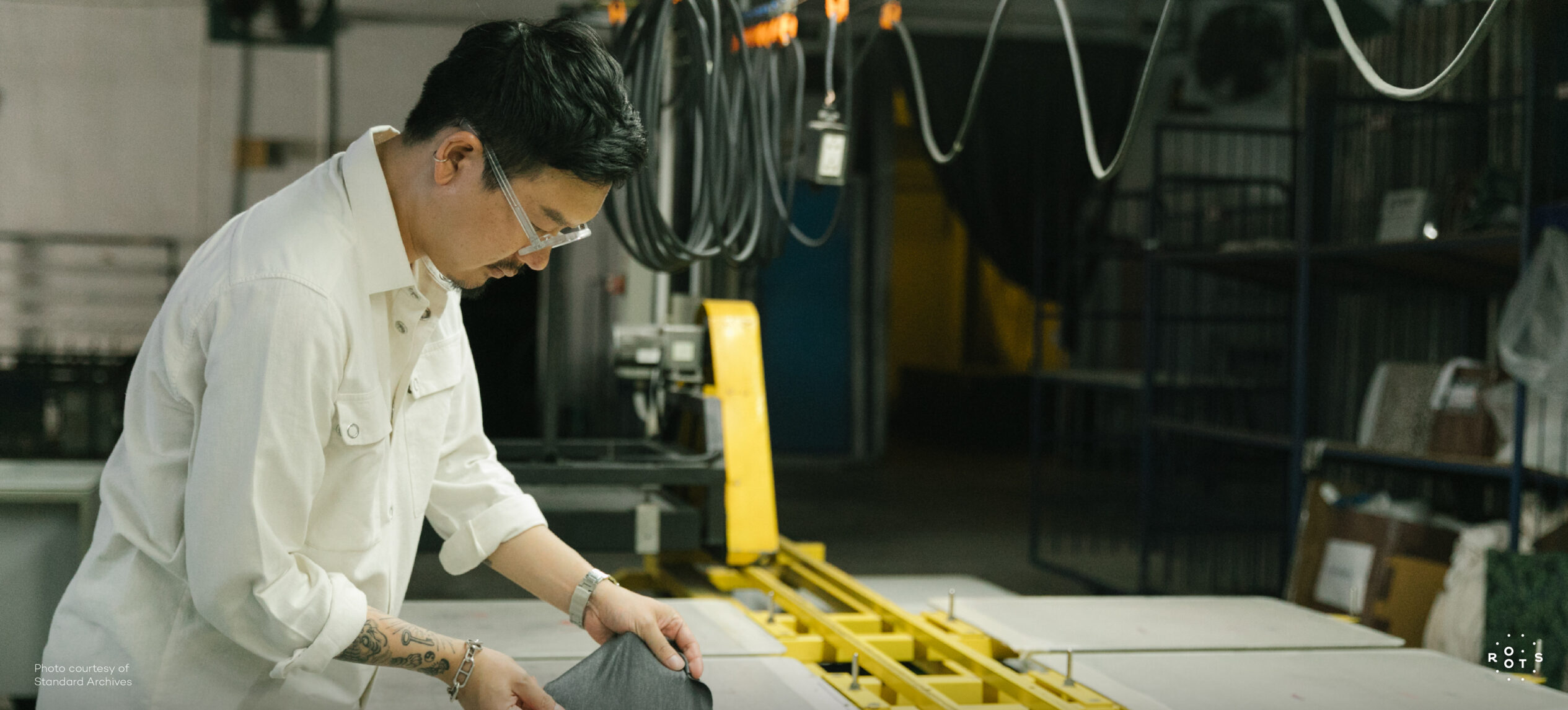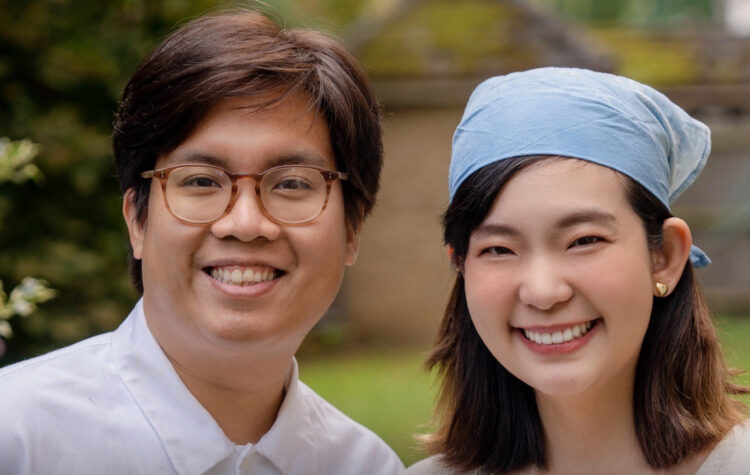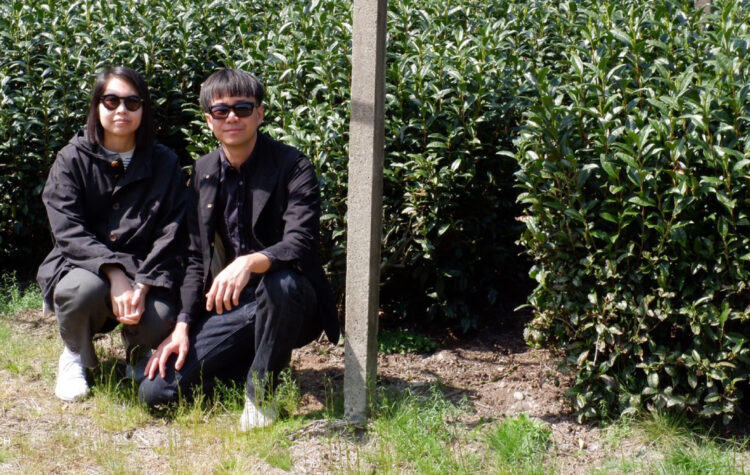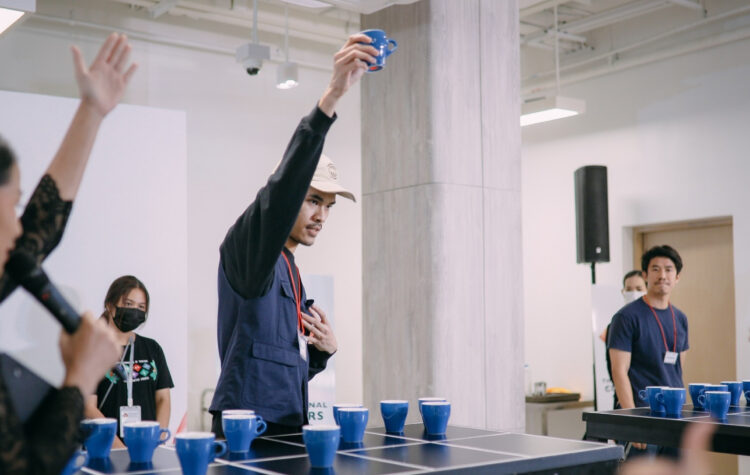Behind an Everyday Essential, like a simple-looking t-shirt, is a story that would take more than a day to tell for ‘Karn Kulla-ark,’ the heir to a garment factory that produces everything from fabric to finished products. With a commitment to sustainability, Karn founded Standard Archives, a clothing brand that gives new life to leftover and overstocked materials.
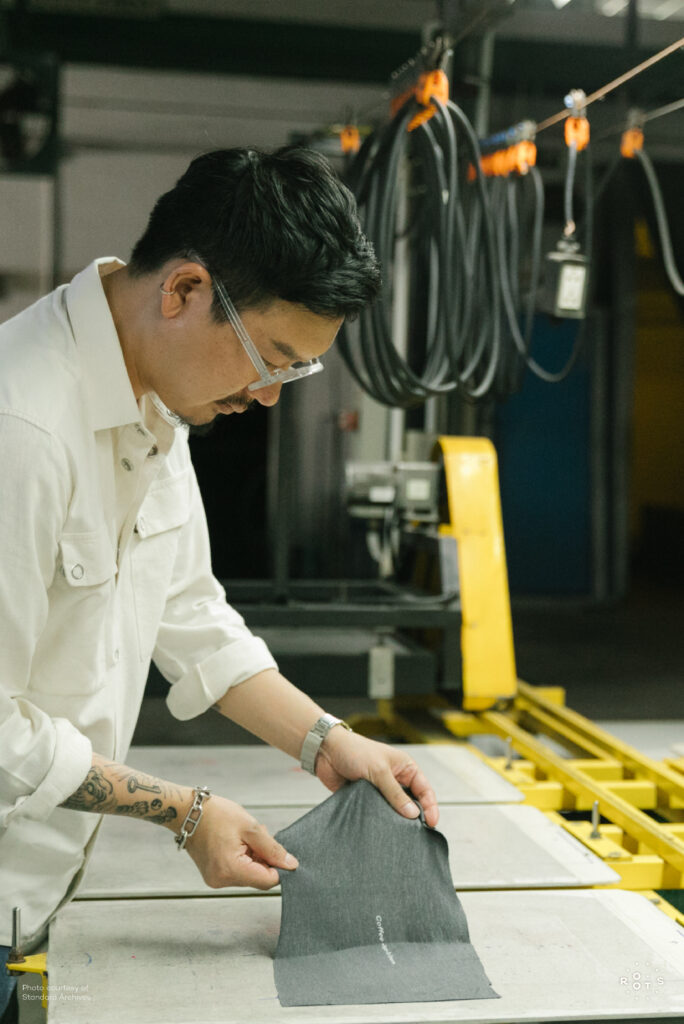
Today, in addition to the launch of the ‘Roots Everyday Goodies’ collection, which features oversized T-shirts from the collaboration between Roots x Standard Archives, we are excited to present an in-depth conversation with the founders of Standard Archives. This conversation will give you a deeper understanding of this kind-to-the-earth clothing brand.
WHAT ARE THE LEFTOVERS FROM THE FASHION INDUSTRY THAT YOU HAVE SEEN SINCE YOU WERE A CHILD TO THIS DAY?
The leftovers I see can come from anything, from fabric scraps and leftover threads to rejected fabric that didn’t meet the customer’s color requirements. For example, if a customer orders a navy blue fabric, and we dye it a different shade of navy blue, the customer will reject the fabric. The rejected fabric then becomes a leftover. It’s a common occurrence because it’s difficult to ensure that each dye or print lot is identical. The water quality can vary from one lot to the next, which is a significant cause of color variation.
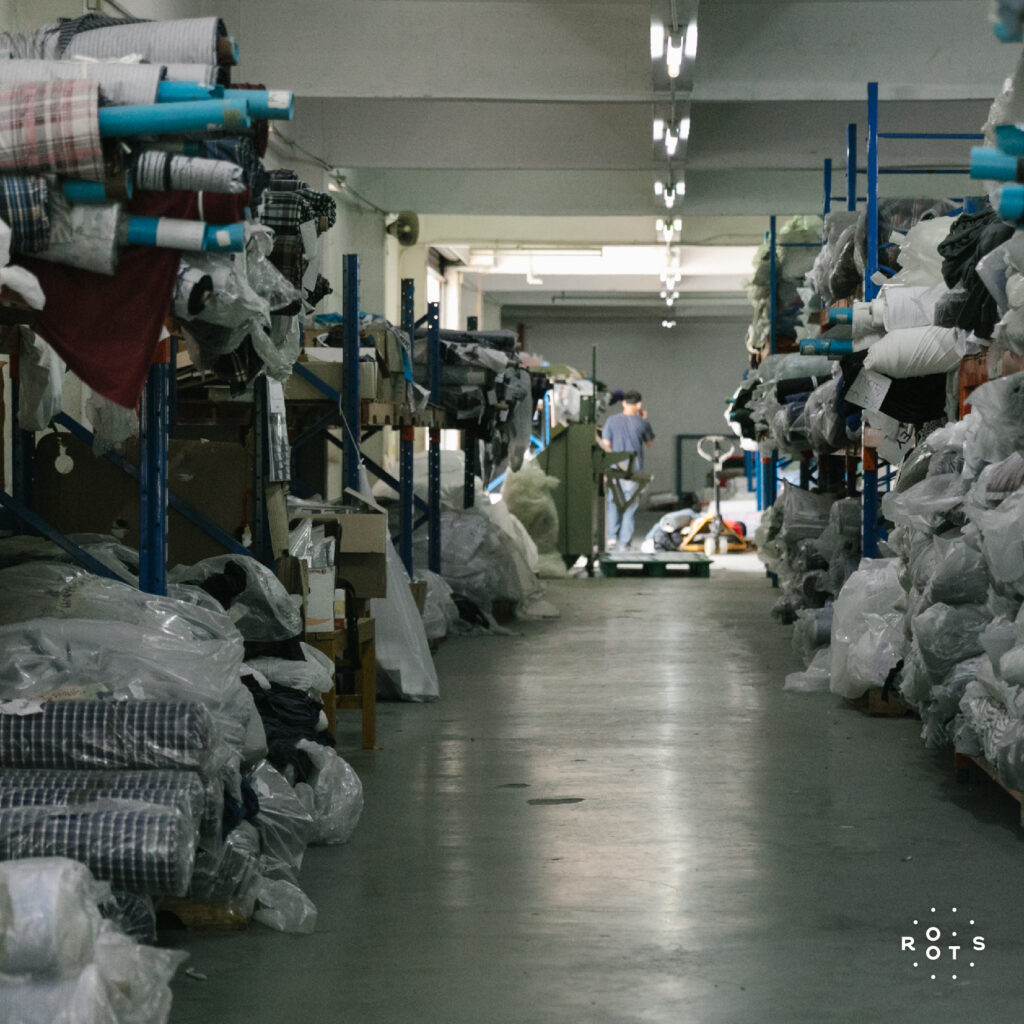
Sometimes, leftovers are caused by human error. For example, an order for a customer requires about 100 kilograms of fabric, but someone accidentally orders 1,000 kilograms of printed fabric. Or, we might calculate that we need 100 kilograms of fabric to produce the required items, but in reality, we use less than 100 kilograms. This is often the case with knitted fabrics, which have a loose structure and can vary in weight. For example, a knit fabric order may require 100 kilograms of fabric, but we might only use 80 kilograms. In contrast, jeans, which are woven fabrics, have a much lower percentage of variation.
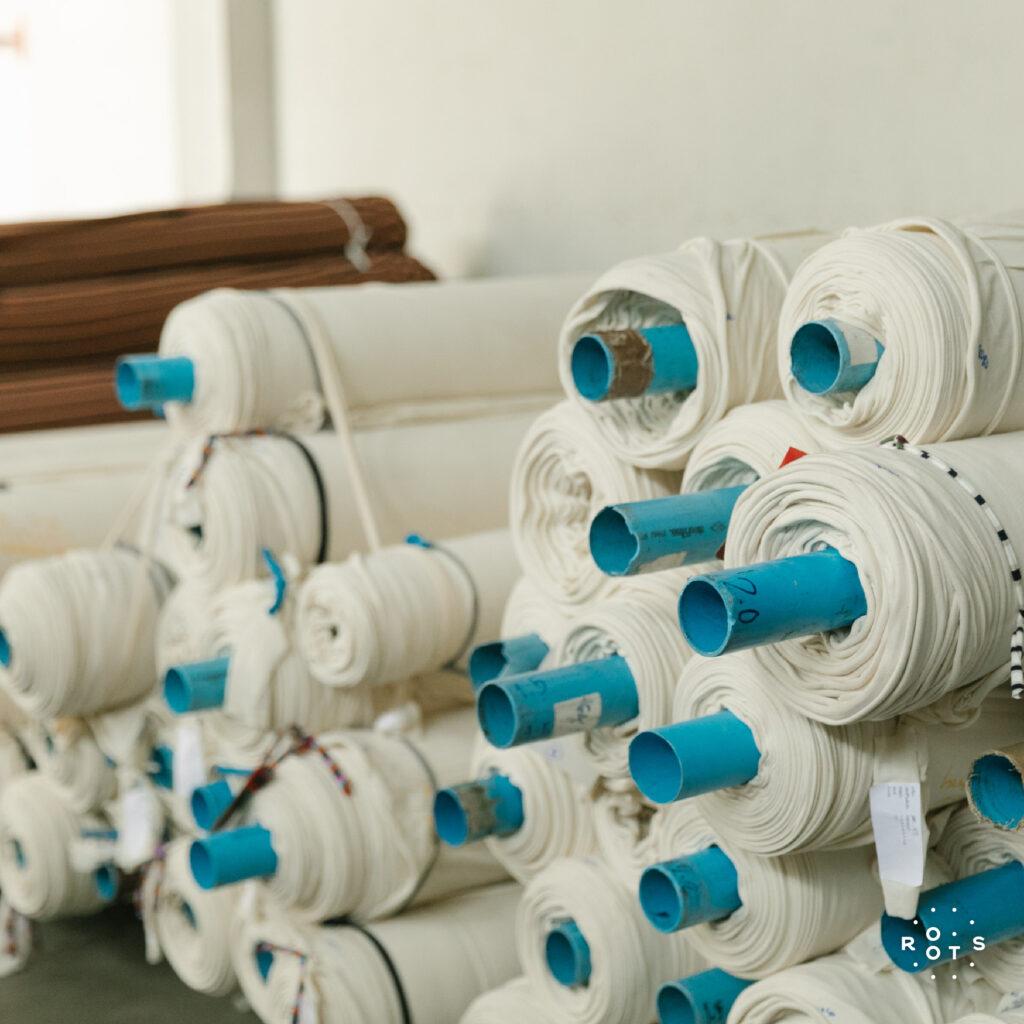
I have a lot of leftover fabric at home that I feel guilty about. The amount of resources we put into production is truly enormous. This doesn’t just happen at my factory, but at every factory in the industry. It’s an area that factories and brands have never discussed – that we have tons of this leftover stuff in our hands. So, Standard Archives started from the idea that we need to do something with this excess fabric.
HOW IS YOUR DESIGN PROCESS DIFFERENT FROM OTHER CLOTHING BRANDS WHEN YOU START WITH LEFTOVERS?
If a regular brand starts its design process with an idea in their head and then chooses the fabric to match that idea, Standard Archives starts with the fabric and then designs around it.
WHAT DOES THE BRAND’S TAGLINE ‘MAKE KINDER THINGS’ MEAN TO YOU?
I wrote the tagline “Make kinder things” because I didn’t want to make clothes that are mean, such as clothes that people have to have perfect bodies to wear or clothes that have to show off a lot of skin. I’m not saying these clothes are wrong, but I feel like they make the wearer a target of attention. It’s like wearing them to be criticized or judged.
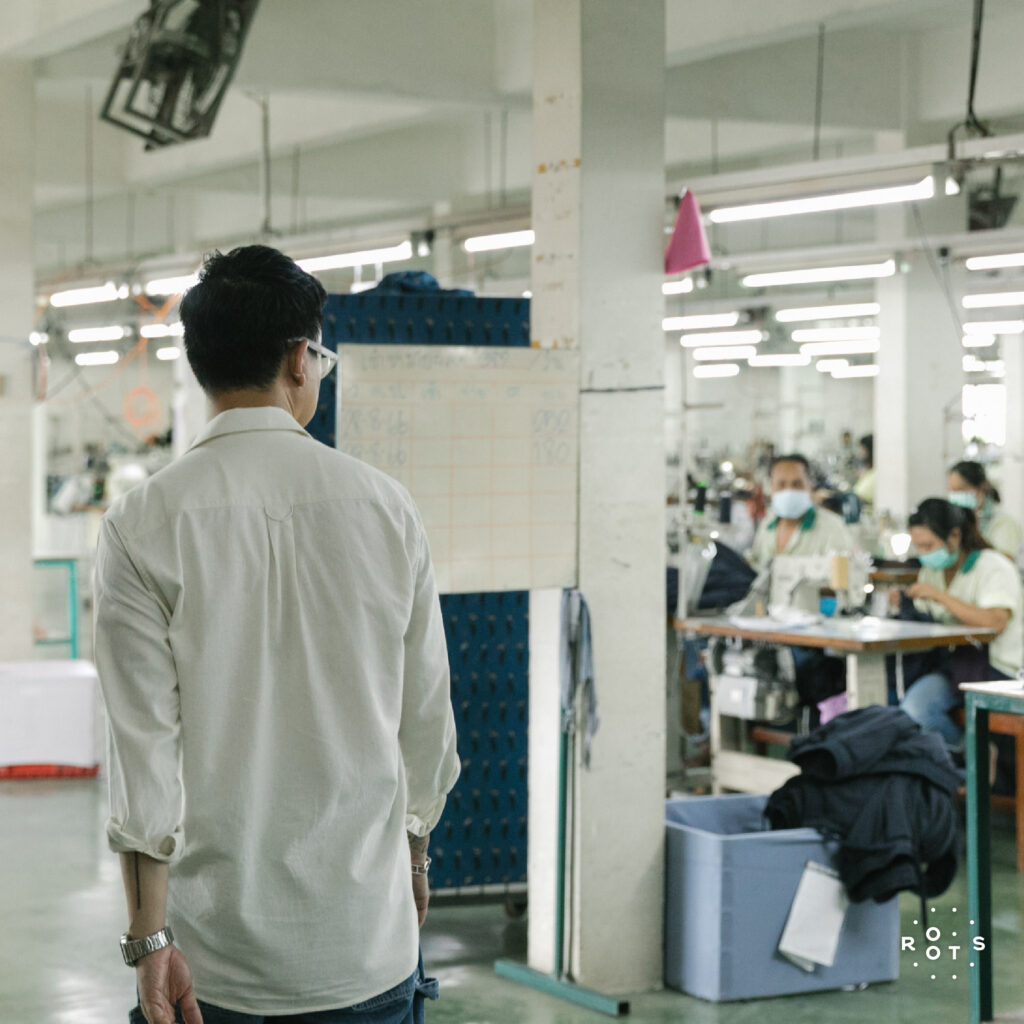
For me, “Make kinder things” means two things. First, it’s about sustainability. Second, it’s about making clothes that are easy to wear and don’t make you feel self-conscious. Clothes that anyone can wear are kinder clothes, in my opinion. Recently, I’ve been making unisex clothes rather than separate women’s and men’s clothing. This makes it easier for the brand to manage sizes and inventory.
WHAT ARE THE PRIORITIES OF STANDARD ARCHIVES’S CLOTHING PRODUCTION?
One of my biggest concerns is how to design new clothes that can be combined with existing ones. When clothes can be easily matched, we don’t need to have a lot of things. This makes it easier to get dressed, and it also makes it easier for stylists to take photos. Looking at our clothes, you’ll notice that each month’s drop is not a separate collection. Instead, it’s a continuous story from the beginning of the year to now. In other words, it’s the same collection throughout the year.
CAN WE DEFINE WHAT YOU DO AS SUSTAINABLE FASHION?
Personally, I don’t really like to use that word. While we’ve used that title before, I feel these practices should be the standard for everyone. It should be a model that everyone should be using already. So for now, I don’t have that title. I just want to make kinder clothes that are climate-friendly, easy to wear, care for, and have the least impact on the world possible.
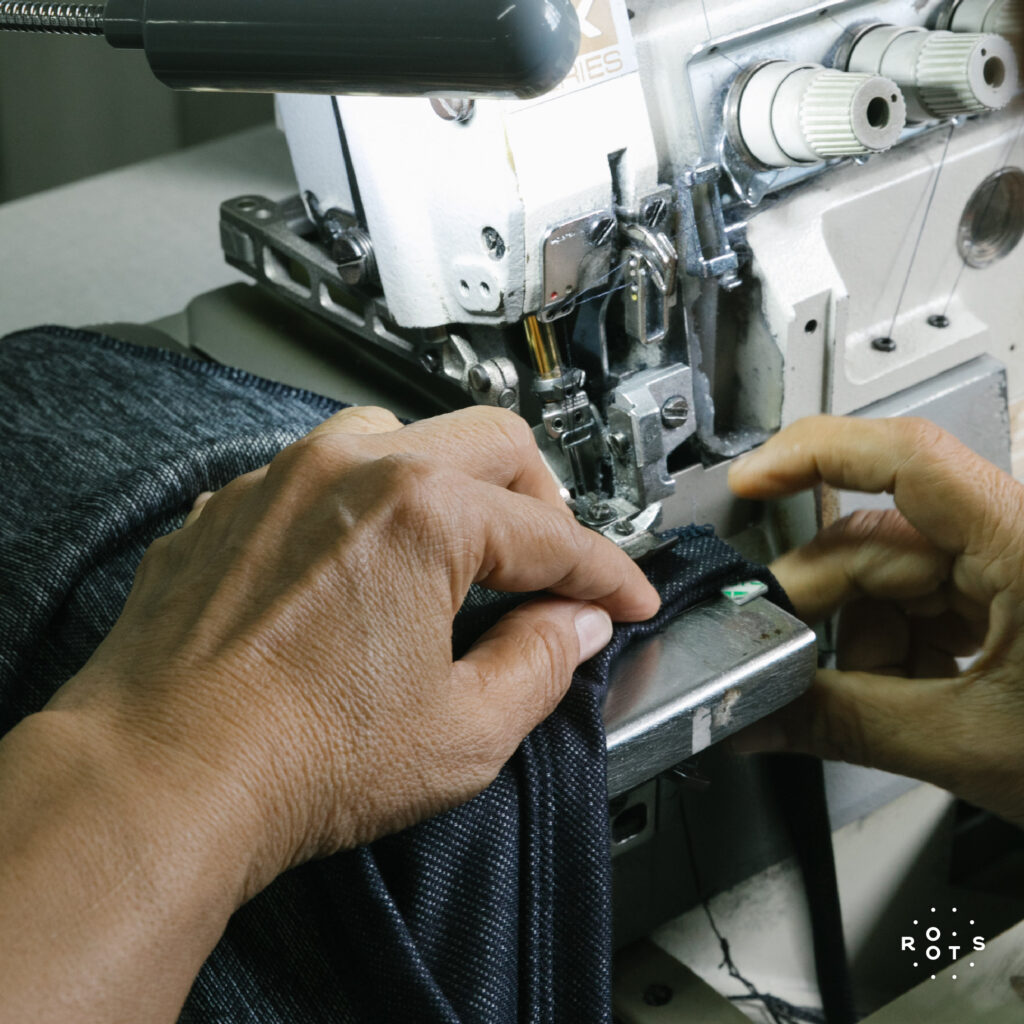
COULD YOU SHARE WITH US THE STORY BEHIND THESE ROOTS GOODIES OVERSIZED T-SHIRT?
When Roots gave me the brief to make a t-shirt using sustainable materials, I thought of 2-3 patterns that would be fit for Roots customers – easy to wear and unisex. I then looked at what fabrics we had left. The first one I thought of was recycled cotton made from factory fabric scraps that are beaten and spun into yarn, then woven into a new fabric. However, with our current production technology, recycled fabric tends to be quite rough. Plus, the pattern I was using required a thicker fabric. So, I returned to see if any of our leftover fabrics would work. I found some leftover fabric we developed with an Italian clothing brand in 2017. The fabric was a little thicker, but it’s a thickness that’s not too hot to wear in Thailand’s climate.
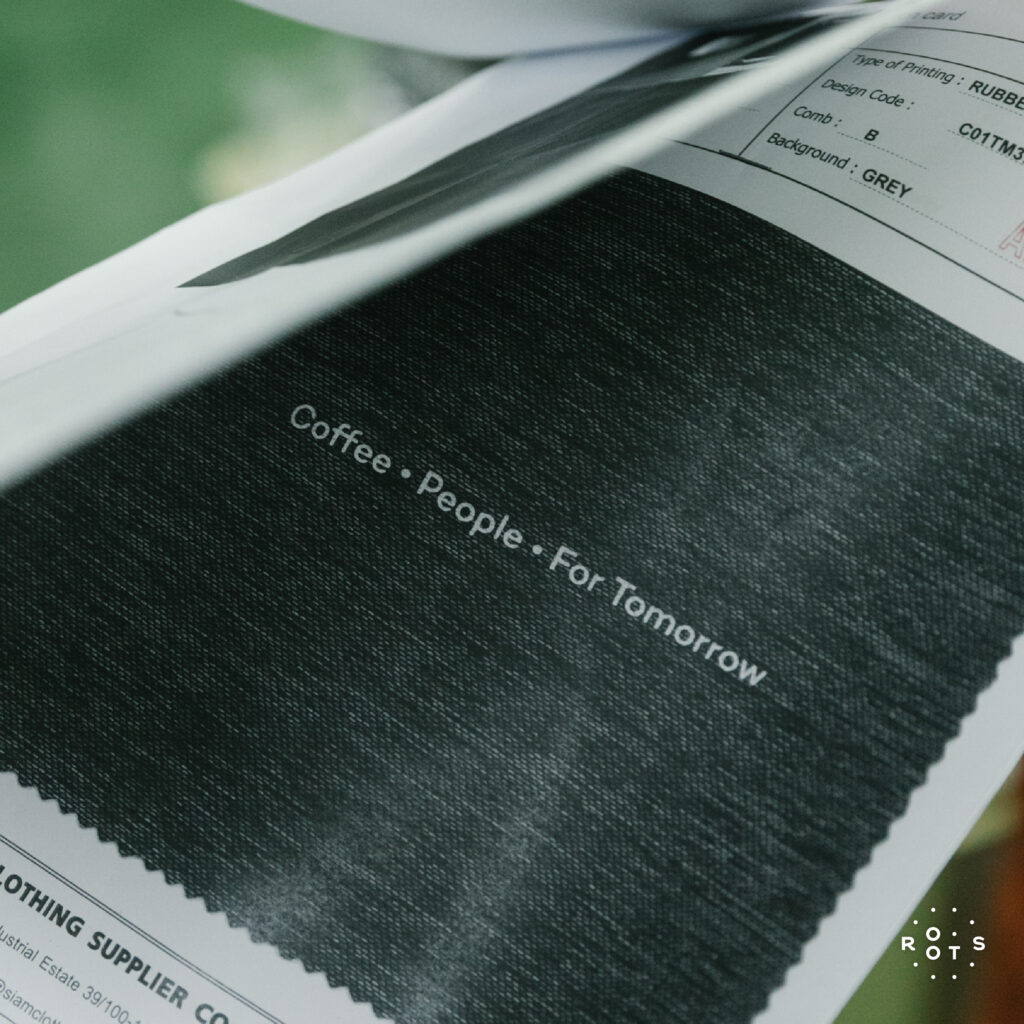
WHAT DO YOU WANT PEOPLE TO REMEMBER ABOUT THIS KIND SHIRT?
I want this project’s t-shirts to make people realize that we have a lot of leftover materials. There are many possibilities for us to use these materials to create something practical. I also want customers who buy the t-shirts to be curious about the process of making clothes. In the past, people had to choose fabrics and have their clothes tailored to their measurements. In those days, people had a strong connection with their clothes. Since the advent of ready-to-wear clothing, our connection with clothes in terms of knowing how they are made has almost disappeared. As a result, we have come to see clothes as less valuable.
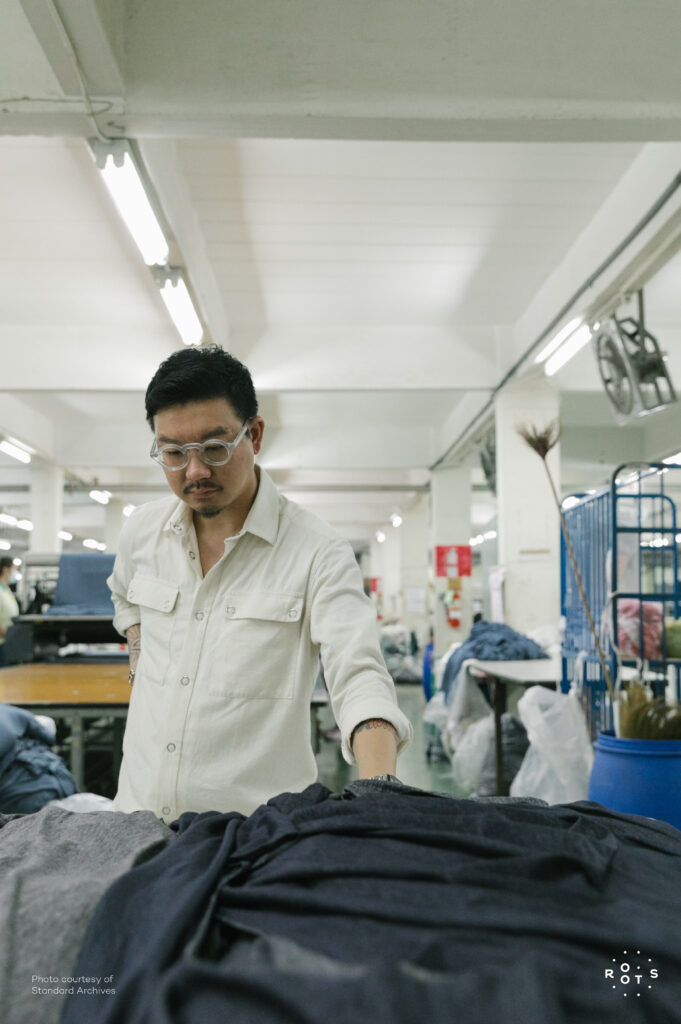
I want this project to be a way to tell everyone that clothes are something special that we all wear and use every day. If we knew how much work goes into making a piece of fabric, like cotton, from planting and harvesting to washing, spinning, and weaving, and how many resources it takes, we would all want to consume in a way that is kinder to the world.





